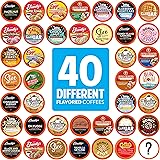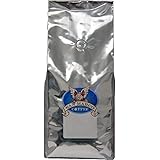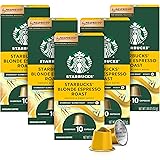Crafting the Perfect French Press Coffee: Your Guide to Rich, Full-Bodied Brews
Do you dream of consistently making amazing coffee at home, coffee that truly satisfies and invigorates your senses? If you’re tired of bland, watery brews and ready to unlock a richer, more robust flavor profile, then mastering the French press coffee method is your next step. As demonstrated in the insightful video above, the French press offers a unique path to a deeply satisfying cup, making it a favorite among coffee aficionados worldwide.
This timeless brewing technique allows more of the coffee’s natural oils and fine sediments to make their way into your cup, resulting in a brew that is often described as full-bodied, hearty, and intensely flavorful. Unlike drip coffee makers that filter out many of these desirable compounds, the French press immerses the grounds completely in hot water, extracting every nuanced essence.
Why French Press Coffee Stands Apart: Unlocking Deep Flavors
What truly sets French press coffee apart? It’s all about the oils. When you brew with a French press, the coarse grind and lack of a paper filter mean that more of the coffee’s natural oils and soluble solids are retained in the final cup. This creates a sensory experience that is far more profound and complex than lighter brewing methods.
Think of it as the difference between a delicate salad and a savory steak, as brilliantly put in the video. Some coffees, like a light salad, offer bright, acidic notes and a clean finish. French press coffee, however, is your rich, full-bodied steak – intensely flavorful, satisfyingly heavy on the palate, and often boasting a velvety texture. This robust quality makes French press an excellent choice, especially if you enjoy adding cream or sugar to your coffee, as the coffee’s inherent strength stands up beautifully to these additions without being overshadowed.
Beyond the taste, coffee itself is a powerhouse. Research from the Harvard T.H. Chan School of Public Health suggests that moderate coffee consumption (about 3-5 cups per day) is associated with a lower risk of several diseases, including type 2 diabetes, heart disease, and some cancers. Brewing it at home with a French press ensures you’re getting a fresh, high-quality cup every time, maximizing both enjoyment and potential health benefits.
Essential Tools & Ingredients for French Press Success
To embark on your French press journey, you’ll need a few key items. Fortunately, the setup is quite minimalist, making it accessible for any home brewer:
- A French Press: These come in various sizes, often measured in cups (typically 4oz per cup). The video uses a single-serving approach, but the ratios can be scaled up for larger presses.
- Quality Coffee Beans: The host emphasizes selecting the “right coffee.” Look for fresh, whole beans that have been roasted recently. For French press, medium to dark roasts often shine, offering those rich, chocolatey, or nutty notes that complement the full-bodied brew.
- A Coffee Grinder: An absolute must! A burr grinder is highly recommended for consistent grind size, which is critical for French press.
- A Kettle: Preferably one with temperature control, allowing you to hit the precise 204°F mark.
- A Kitchen Scale: For accurately measuring coffee grounds and water in grams, ensuring a consistent and repeatable brew. This precision is a game-changer for quality.
- A Timer: Crucial for monitoring steep time.
The Art of the Grind: Coarseness is Key for French Press Brewing
The grind size is perhaps the most critical factor in French press brewing. The video highlights the need for a “very, very coarse” grind, specifically comparing it to the consistency of sea salt. But why is this so important?
A coarse grind is essential for two main reasons. Firstly, it prevents over-extraction. Because French press involves full immersion of coffee grounds in hot water for several minutes, a finer grind would result in coffee that tastes bitter and overly acidic. The larger particles of a coarse grind extract more slowly and evenly. Secondly, a coarse grind ensures a smooth plunge. If your grind is too fine, the plunger will become difficult to press down, leading to a sludgy, sediment-heavy cup and potentially a messy overflow.
To achieve the “sea salt coarseness,” aim for particles that are distinct and chunky, not powdery. If you don’t have a burr grinder, many local coffee shops will grind beans for you. Just remember to specify “French press coarse” to get the ideal consistency.
Precision Brewing: Ratios, Temperature, and Timing for Your Perfect Cup
Making a great French press is a surprisingly precise process, despite its simple appearance. The video provides excellent, data-driven parameters:
- Coffee Dose: 30 grams of coffee.
- Water Quantity: 350 total grams of water.
- Brew Temperature: 204°F (or just off a rolling boil if you don’t have temperature control). This temperature is ideal for extracting maximum flavor without scorching the grounds.
- Brew Ratio: A 1 to 12 ratio (coffee to water). This ratio, for example, 30g coffee to 350g water, is a fantastic starting point for a strong, flavorful cup. If you prefer a milder brew, you could slightly adjust this to 1:15, but 1:12 provides that rich French press experience. Remember, these ratios are scalable; simply multiply your coffee weight to find the corresponding water weight for larger batches.
Utilizing a kitchen scale for these measurements ensures you can replicate your perfect cup consistently. Consistency is the secret to great home brewing.
The Bloom & Steep: Unlocking Aromas and Developing Flavor
The brewing process for French press involves two crucial phases: the bloom and the steep.
The Bloom: The Awakening of Flavor
After adding your coarsely ground coffee to the French press, the first step is the “bloom.” This involves saturating the grounds with a small amount of hot water to allow carbon dioxide to escape. The video instructs to add 60 grams of water (twice the amount of coffee, a good rule of thumb) and let it bloom for 15 seconds. This initial pour causes the coffee to “de-gas,” releasing trapped CO2 from the roasting process. This process, often seen as a bubbling or rising of the coffee bed, is vital because it allows for more even extraction once the rest of the water is added, preventing sour notes and developing a more rounded flavor.
The Steep: The Heart of French Press Extraction
Following the bloom, you’ll pour the remaining water up to the total 350 grams. Then, it’s time to wait. The suggested steep time is precisely four minutes. This duration is a sweet spot for full immersion brewing, allowing sufficient time for the hot water to extract the delicious flavors and oils from the coffee grounds without leading to over-extraction. During this time, the coffee’s soluble compounds dissolve into the water, building body and complexity. Resist the urge to plunge early, as this can result in an underdeveloped, weak cup.
The Plunge & Pour: Serving Your Masterpiece
Once your four minutes are up, it’s time for the final act: the plunge. The key here is to plunge slowly and steadily. A rapid plunge can disturb the settled grounds, forcing fine particles through the filter and into your cup, resulting in excessive sediment. A slow, controlled press allows the plunger to separate the grounds from the brewed coffee effectively.
Immediately after plunging, serve your French press coffee. As the video wisely advises, “the longer you keep it in there, the longer it’s going to steep.” Leaving the coffee in the press means it continues to extract, leading to over-extraction and a progressively more bitter taste over time. Pouring it into a pre-warmed cup or a carafe stops the brewing process and preserves the flavor profile you worked so hard to achieve.
You might notice a bit of foam or fine sediment in your cup, which is characteristic of French press coffee. Some enthusiasts even scoop off the foam, as mentioned in the video, to achieve a cleaner cup, but this is entirely a matter of personal preference.
Selecting Your Beans for the Best French Press Experience
The host rightly points out that the French press method truly shines “with the right coffee.” While personal preference always plays a role, certain coffee characteristics tend to excel in a French press:
- Roast Level: Medium to dark roasts are often favored. Their inherent chocolatey, caramel, nutty, or smoky notes are beautifully amplified by the full-bodied nature of a French press brew. Lighter roasts, with their more delicate and acidic profiles, can sometimes be overpowered by the heavy body, though some enjoy the contrast.
- Origin: Coffees from regions known for their fuller body and lower acidity, such as Brazil, Sumatra, or even certain Central American blends like the Brazilian and Guatemala blend the host used, are excellent choices. These beans naturally lend themselves to the hearty character of French press coffee.
- Freshness: Always opt for freshly roasted beans. Coffee is at its peak flavor within a few weeks of roasting. Buying whole beans and grinding them just before brewing preserves the volatile aromas and oils that are crucial for a delicious cup of French press coffee.
Making French press coffee is a rewarding ritual that offers a deeply satisfying, rich, and full-bodied cup. By focusing on the coarse grind, precise ratios, ideal temperature, and proper steep time, you can consistently brew French press coffee that rivals your favorite coffee shop. Experiment with different beans and refine your technique, and you’ll soon discover the unparalleled pleasure of this classic brewing method.







